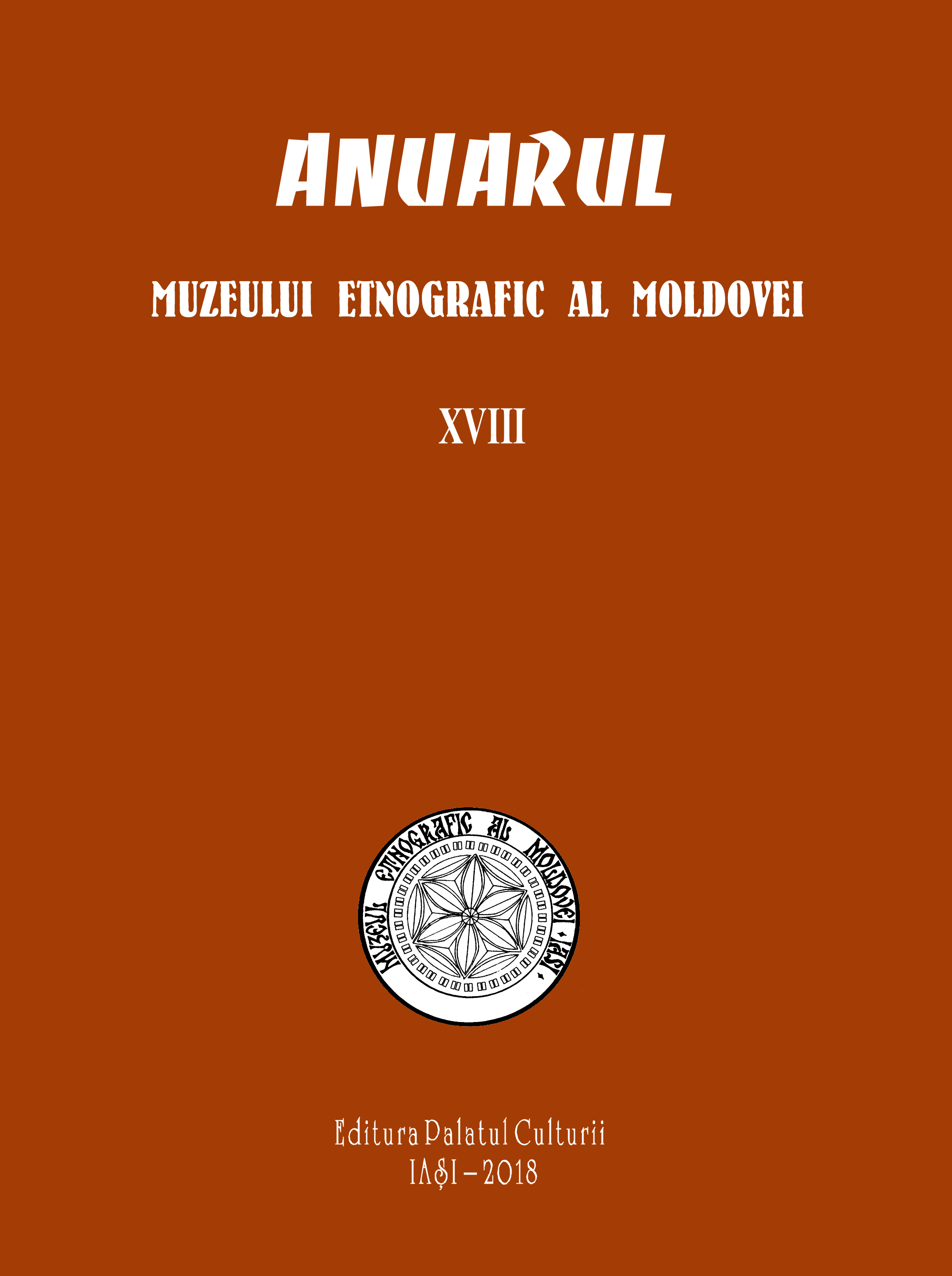Reprezentarea meșteșugurilor tradiționale în patrimoniul Muzeului Etnografic al Moldovei (I)
Representation of Traditional Handicrafts in the Collections of the Ethnographic Museum of Moldavia (I)
Author(s): Marcel LUTICSubject(s): Cultural Anthropology / Ethnology
Published by: Editura Palatul Culturii
Keywords: handicraft heritage; textile household industry; distaff; spindle; ‘drugă’; ‘vârtelniţă’; ‘foşalăi’; ‘sucală’; ripple; ‘răşchitor’; ‘pieptene’; warping mill; horizontal loom
Summary/Abstract: The present paper analyzes the handicraft heritage constituted during the 75 years of existence (made on 28 Aprilie 2018) of the Ethnographic Museum of Moldavia. The period between 1968 and 1975 was the most favourable one in the entire history of the museum, in terms of collection development. In those years no fewer than 368 objects related to traditional handicrafts were purchased by or donated to our institution, most of them belonging to the field of household industry. Our research focussed on the following handicrafts: textile household industry, wood manufacture (wheel making, making objects using staves, woodworking excepting house carpentry), ropemaking, blacksmithing, skin manufacture (making of coats, caps and ‘opinci’ – traditional peasant shoes), pottery and stone manufacture. The documentation work based on museum’s main specific sources: the heritage stored within museum spaces, the inventory record, object data sheet and photographic library. Scientific research led to the identification of approx. 860 objects distributed as follows: textile household industry – approx. 370 objects; wood manufacture – approx. 380; ropemaking – 30; blacksmithing – 25; skin manufacture – 21; pottery – 16; stone manufacture – 15, etc. If we relate these figures to the total amount of museum objects, it results that more than 10% of the museum heritage belong to the field of traditional handicrafts. A large discrepancy is to be noted between household industry and wood manufacture on the one hand, and the other five handicrafts on the other hand. It is our opinion that the museum of Iaşi did not have a coherent purchase policy, as the main ethnographic-cultural areas of Moldavia from which handicraft heritage comes include Bukovina (more than half of them) and afterwards Iaşi, Neamţ and Botoşani counties. The first part of this paper deals with textile household industry. Its circumscribed objects, complex and diverse, belong in their great majority to weaving. Numerically, the objects are distributed as follows: distaffs (63), spools (36), ‘vârtelniţe’ or ‘depănători’ (reeling tools) – 35; spindles – 25; ‘foşalăi’ or ‘chepteni’ (combs) – 23; ‘sucale’ (reeling tool for making yarn pirns) – 20; ripples – 18; ‘răşchitoare’ or ‘spete’ (skein winders) – 17 for each; ‘piepteni’ (an object of the shape of a big hammer used in weaving for thickening the weft) – 16; ‘drugi’ or ‘răsucitori’ (long, thick pins on which the bundle for spinning the warp is placed) – 10; ‘roţi de tors’ or ‘torcători’ (spinning wheels or tools) – 9; ‘meliţe’ (flax and hemp scutching tools), pulleys and warping mills – 7 for each; temples and slays – 6 for each; ‘hreabăn’ (another type of ripple) – 4, etc. A consistent part of the paper deals with distaffs and spools, as they represent almost a quarter of the household industry collection. Then, in accordance with the logical succession of the complex operations of the traditional handicraft of weaving the most important tools and installations are presented: ‘hreabăn’, ‘meliţa’ (scutching tool), ripple, ‘pieptănuşi’ or ‘foşalăi’, ‘răşchitor’, ‘vârtelniţa’ (also called ‘depănătoare’), ‘morişca’ or ‘roata pentru depănat’ (reeling wheel), ‘sucala’ (also called ‘letcă’), warping mill, temple, horizontal loom, ‘pieptene’, sewing frame, etc. We believe that by making this brief investigation in the field of textile household industry and rediscovering its fascinating complexity we paid a discreet tribute to several generations of Moldavian craftsmen and apprentices, but also to the specialists of the Ethnographic Museum of Moldavia who, starting with 1943, had devotedly collected, worthily kept and wisely promoted this valuable dowry of tools.
Journal: Anuarul Muzeului Etnografic al Moldovei
- Issue Year: 2018
- Issue No: 18
- Page Range: 419-450
- Page Count: 32
- Language: Romanian

